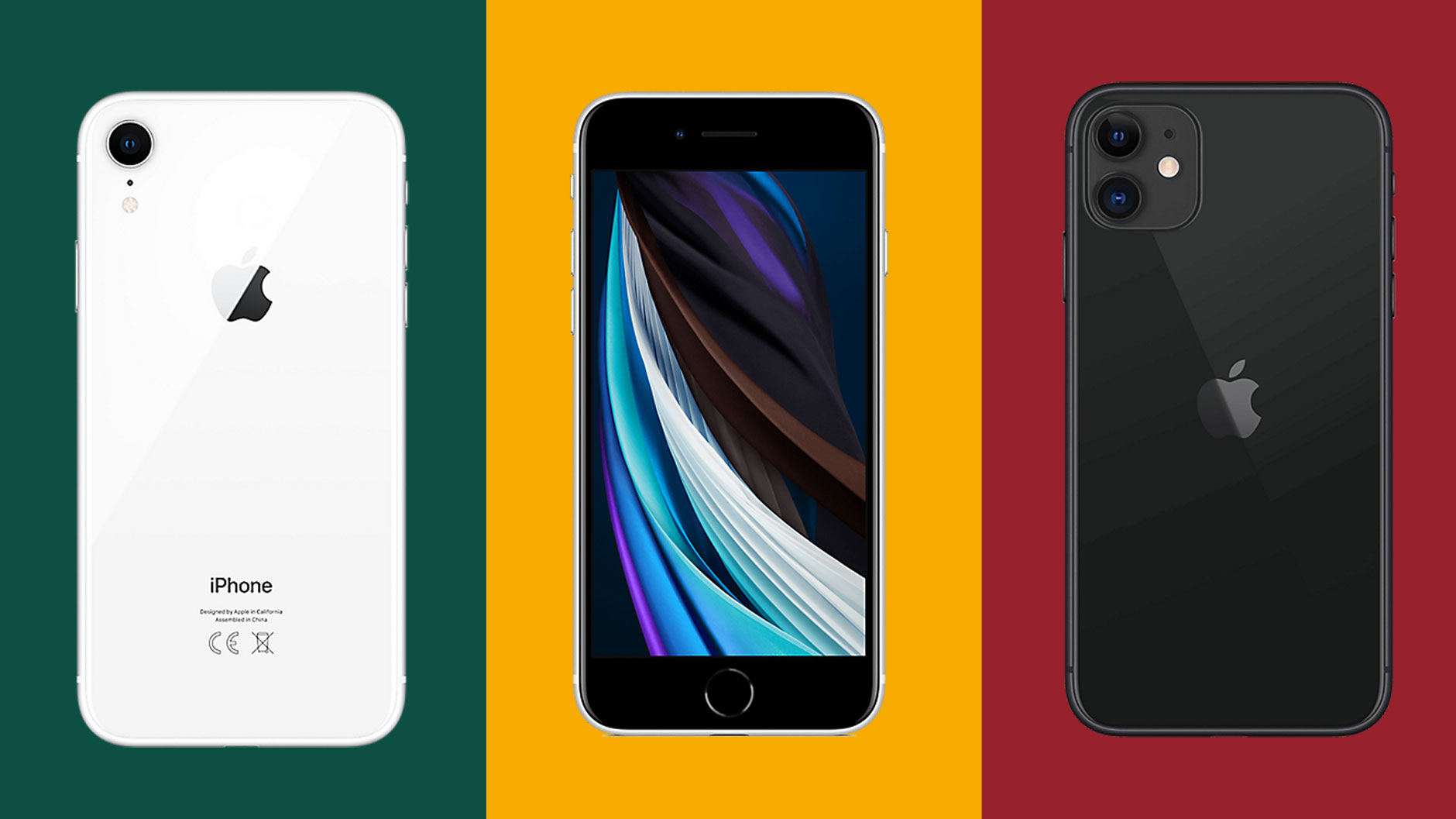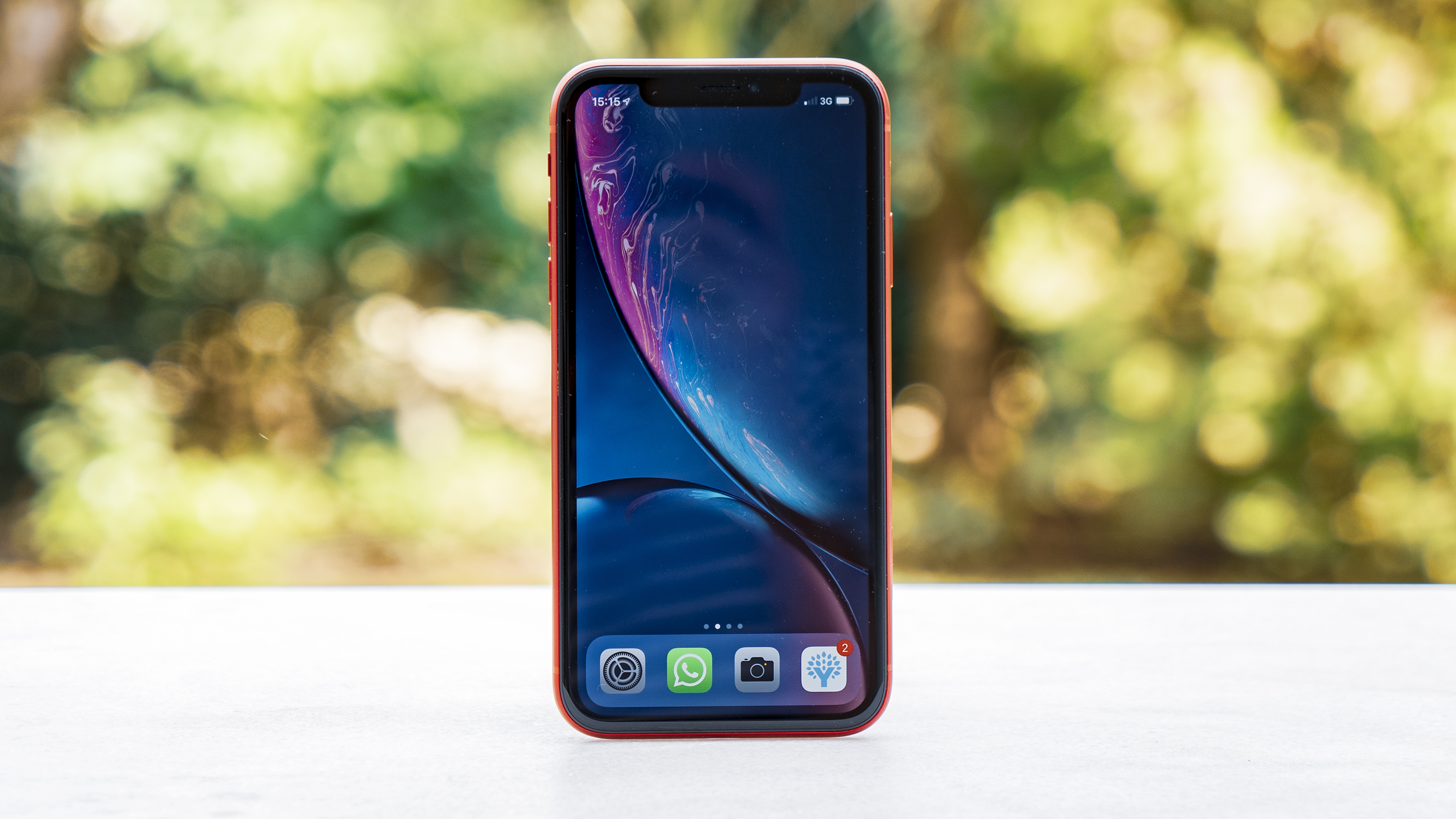iPhone SE 2020 vs iPhone 11 vs iPhone XR: which cheap iPhone is for you?
Which affordable iPhone is right for you?

It’s been a long time coming but Apple has finally launched a successor to the iPhone SE, also dubbed the iPhone SE, but to avoid confusion we'll refer to it as the iPhone SE 2020 or the new iPhone SE.
This phone slots in at the bottom end of Apple’s current smartphone selection, offering a relatively affordable – not to mention compact - alternative to the iPhone 11 range.
Previously your cheapest option if you wanted one of the latest iPhone models was the iPhone 11 itself, while the iPhone XR provided a slightly more dated but also more budget option.
As such, these are the key alternatives to the new iPhone SE 2020, so just how does Apple's latest compare to these handsets? Read on to find out.
iPhone SE vs iPhone XR vs iPhone 11 price and availability
The iPhone SE 2020 is out now. It starts at $399 / £419 / AU$749, for which you get 64GB of storage. 128GB meanwhile will cost you $449 / £469 / AU$829, and 256GB costs $549 / £569 / AU$999.
The iPhone 11 on the other hand starts at $699 / £729 / AU$1,199, for which you get 64GB of storage. Prices rise to $749 / £779 / AU$1,279 for 128GB and $849 / £879 / AU$1,449 for 256GB. So the iPhone SE 2020 is far, far cheaper than the iPhone 11.
Then there's the iPhone XR, which starts at $599 / £629 / AU$1,049 for 64GB of storage, rising to $649 / £679 / AU$1,129 for 128GB, and there's no longer a 256GB model available. This then sits between the iPhone SE 2020 and the iPhone 11 in terms of price, but it's much closer to the latter.
Get daily insight, inspiration and deals in your inbox
Sign up for breaking news, reviews, opinion, top tech deals, and more.
Design
The new iPhone SE looks a lot like the iPhone 8, complete with a large bezel below the screen (housing a physical home button with Touch ID). There’s also a large bezel above the screen. The glass back is fairly plain, with just a small camera bump in the top left corner.
The phone is IP67 rated, so it can survive being submerged up to 1 meter deep in water for up to 30 minutes, and it comes in black, white and red shades.

The iPhone 11 meanwhile has a screen-filled front, albeit with a large notch at the top. Flip it over and there’s a large square camera block in the top left corner.
The phone has a metal frame, a glass back, and it’s IP68 certified for water and dust resistance – that means it can survive submersion of up to 2 meters for up to 30 minutes. It’s also available in a range of mostly bright colors, including black, green, yellow, purple, red and white.

Finally, the iPhone XR looks a lot like the iPhone 11 from the front, with a similar notch and small bezels.
It also has a metal frame and a glass back, but its rear camera is positioned more like the iPhone SE 2020's, and it has the same water resistance as that phone. It's available in white, black, blue, yellow, coral, and red shades.

As for the dimensions and weight, the iPhone SE 2020 comes in at 138.4 x 67.3 x 7.3mm and 148g, while the iPhone 11 and iPhone XR are both 150.9 x 75.7 x 8.3mm and 194g.
So the new iPhone SE is smaller and lighter than the iPhone 11 or iPhone XR, but looks rather more old-fashioned and bezel-heavy. None of these phones have a 3.5mm headphone port.
Display
The iPhone SE 2020 has a 4.7-inch 750 x 1334 IPS LCD screen with 326 pixels per inch, while on both the iPhone 11 and iPhone XR there’s a 6.1-inch 828 x 1792 IPS LCD display with 326 pixels per inch.

So the iPhone 11 and iPhone XR are larger and higher resolution than the new iPhone SE, but with the same pixel density. All three phones also have up to 625 nits of brightness and support True Tone, allowing them to automatically adjust the white balance to suit your environment.
None of these phones match the superior OLED display of the iPhone 11 Pro, but considering what they cost we were reasonably happy with all three screens in our reviews of these phones.

Camera and battery
The iPhone SE 2020 and iPhone XR both have a single-lens 12MP f/1.8 camera on the back, supported by optical image stabilization (OIS) to help keep your shots steady and in focus. On the front there’s a 7MP f/2.2 camera.
With the iPhone 11 you get a 12MP f/1.8 main sensor and a 12MP f/2.4 ultra-wide one. The main sensor also has OIS, and there’s support for 2x optical zoom.
On the front meanwhile it has a 12MP f/2.2 'TrueDepth' camera, which additionally powers Face ID. The iPhone XR also has Face ID, despite its otherwise inferior front-facing snapper.
So you get the most lenses on the iPhone 11, and you sacrifice Face ID if you opt for the new iPhone SE, but the three phones have many of the same modes and features, including portrait mode. For video, all three phones top out at 4K quality at 60fps.

As for the battery, Apple hasn’t said what size the one in the iPhone SE 2020 is, but it's reportedly 1,821mAh, and the company has claimed that it offers up to 13 hours of video playback (or 8 hours of streamed video).
We know that the iPhone 11 meanwhile has a 3,110mAh battery, one which supposedly offers up to 17 hours of video playback (or 10 hours of streamed video).
The iPhone XR on the other hand splits the difference with a 2,942mAh battery offering up to 16 hours of video playback.
In our own tests we found that the iPhone 11 and iPhone XR could easily last a day or just beyond, while the iPhone SE 2020 would often need a juice injection in the evening.
When it comes time to charge, all three phones support 18W wired charging, as well as wireless charging.
Specs and features
Both the iPhone SE 2020 and the iPhone 11 have a top-end A13 Bionic chipset (just like the iPhone 11 Pro and iPhone 11 Pro Max), and a choice of 64GB, 128GB, or 256GB of storage. The iPhone 11 additionally has 4GB of RAM, while the iPhone SE reportedly has 3GB (but this isn't confirmed at the time of writing).
The iPhone XR meanwhile finds itself in the interesting position of having a slightly lower end A12 Bionic chipset paired with 3GB of RAM, despite costing more than the new iPhone SE.
In terms of performance then, the iPhone 11 should be at the top of the heap, followed by the iPhone SE 2020, and then the iPhone XR, but most of the time the differences probably won't be very noticeable.
It's worth again noting also that the iPhone 11 and iPhone XR additionally have facial recognition powered by Apple’s secure Face ID system, whereas the iPhone SE 2020 relies on a Touch ID fingerprint scanner.
As for software, all three phones run iOS 13, but the iPhone XR - being older - shipped with iOS 12, so it might not have as many software updates left in it as the other two phones.

Takeaway
The iPhone SE 2020 is the 'budget' iPhone you might have been waiting for, as it substantially undercuts even the basic iPhone 11 and the iPhone XR.
Despite that, it has the same chipset as the iPhone 11, and a higher end one than the iPhone XR. It also has the same storage and software as the iPhone 11.
But it has one less rear camera than the iPhone 11, the design is arguably more dated than either the 11 or the XR, the screen is smaller than either, the battery life is worse, and – rather than Apple’s modern Face ID system – you get older Touch ID.
So a lot of sacrifices and changes have been made to keep the price down – but the new iPhone SE is also small, which is something a number of people still like their phones to be. So it’s ultimately quite a different proposition to either the iPhone 11 or the iPhone XR, and is sure to be the better option for some.
- These are the best iPhones
- Get extra security and IP spoofing with these iPhone VPN apps
- iPhone 11 deals: compare the cheapest prices
James is a freelance phones, tablets and wearables writer and sub-editor at TechRadar. He has a love for everything ‘smart’, from watches to lights, and can often be found arguing with AI assistants or drowning in the latest apps. James also contributes to 3G.co.uk, 4G.co.uk and 5G.co.uk and has written for T3, Digital Camera World, Clarity Media and others, with work on the web, in print and on TV.